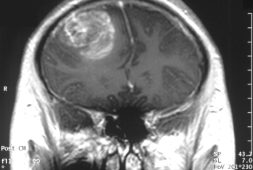The White Noise In Flickering TV Screens May Actually be Helpful to Children With Reading And Writing Difficulties

Several studies have already been made on children with learning difficulties. These researchers have been tirelessly looking for solutions that may help these kids cope better. While there have been hundreds of theories made, a solid conclusion has yet to be published.
Now, help may be on the way as a recent study has shown how children with attention difficulties, such as ADHD, are able to solve cognitive tasks more efficiently and effectively when they are exposed to auditory white noise.
While there are a few studies out there, this is the first time that this type of link has been made. They demonstrated the connection between visual white noise and cognitive abilities such as memory, reading, and non-word decoding in those that experience difficulties in reading and writing.
“The white noise to which we exposed the children, also called visual pixel noise, can be compared with giving children glasses. The effect on reading and memory was immediate,” explained Göran Söderlund, Senior Lecturer in Education at the University of Gothenburg and Professor of Special Education. He elaborated on this at the Western Norway University of Applied Sciences.
The study made included around 80 students in the Småland region in the southern part of Sweden. The children who took part were carefully chosen. They had performed a word recognition test where the participants were split into three groups: good readers, children with some reading difficulties, and children with major reading difficulties (ex. having phonological impairments). Here, the children were tasked to read 12 words. They did this while being exposed to four different levels of visual white noise, ranging from zero to high. Then, the researchers assessed how many of the words they were able to read correctly and how many words they were able to recall after the task.
White Noise Can Improve Reading Skills and Memory
The results of the experiment were interesting. They found that the group with major reading difficulties, in particular, those with phonological difficulties, performed significantly better when they were actually exposed to visual pixel noise. In fact, these participants were able to read more words correctly. More importantly, they were also able to recall more words when they were exposed in the moderate noise conditions.
In the meantime, the white noise that were exposed to the good readers or the ones with only very minor reading problems was irrelevant. These children didn’t experience any changes. The researchers also noticed that for some, the noise was actually a distraction for them.
“This is the first evidence of visual white noise having effects on higher-level cognition, in this case both reading and memory,” explained Göran Söderlund.
The Key is Using the Right Amount of White Noise
The children involved in the study were exposed to the different levels of white noise. The outcome showed that the amount of noise used can be crucial for reading and memory. Details of the study have been published in the scientific journal Brain and Behavior.
“You can compare it with being shortsighted and needing glasses. We saw that when we exposed the children to a medium level of white noise, their reading improved. However, their reading skills were less good when there was no noise or a high level of noise,” said Göran. He further added, “These results show that children with reading and writing difficulties can be helped with an incredibly simple intervention. By adjusting screens in school or at home, we hope to be able to resolve their problems at a stroke. This is the first study of its kind, and replications are needed.”
Göran Söderlund is now curious about diving deeper into the study and now wants to do further investigations on the effects of white noise. He hopes that new studies will be able to answer the question on whether practicing with white noise for prolonged periods of time could actually show lasting improvements to the children.
Göran explained, “It’s worth exploring, as we just don’t know. This first study of ours is basic research. But our results show that the children improved immediately, so it’s important to continue with new studies to establish whether this simple measure, which everyone can do on their own laptop, will actually provide enduring help for these children.”



